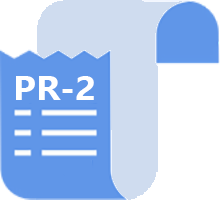Location-Based Reimbursement in CA? DWC Plans Hearing on OMFS Changes

California workers’ comp providers may soon face another layer of complexity in calculating reimbursements: Geographic Practice Cost Indices (GPCI), which would raise or lower reimbursement rates based on the location of service.
The Division of Workers’ Compensation (DWC) contends that GPCI will result in more appropriate reimbursements. Other stakeholders worry GPCI will not accurately reflect the cost of providing services in certain areas. Some wonder if further complicating reimbursement will court fraud, and cause new billing disputes regarding substantiation of the location of service.
A public hearing is scheduled for April 17.
A recent DWC Newsline announced the Division’s intent to revise the Physician and Non-Physician Practitioner Fee Schedule to include GPCI, along with the public hearing.
The DWC rejected the adoption of Medicare’s location-based pricing in 2013, when the OMFS moved to its current Medicare-based Resource-Based Relative Value Scale (RBRVS). The DWC now argues that the proposed GPCI plan, adopted by Medicare in 2017, is a more refined and accurate method:
Adoption of the new Medicare MSA-based locality GPCIs will improve payment allowance accuracy by reflecting the resources required to provide a service according to specific geographic areas. — DWC Newsline 2018-20
Effective January 1, 2019, the proposed changes would eliminate the current average statewide geographic adjustment factor and divide California into 30 or more distinct pricing regions. The earlier Medicare plan, rejected in 2013, would have divided the state into only 9 regions, lumping wildly disparate areas together — a problem the DWC believes Medicare has since resolved.
Those interested can read the proposed regulations here.
Complex Calculations
For all services except anesthesia, providers would calculate reimbursement using GPCI Addendum E, as yet unavailable to the public. Each of California’s 30+ pricing zones would be subject to a Physician Work GPCI, a Practice Expense GPCI, and a Malpractice GPCI. Needless to say, this would introduce even more complexity into the reimbursement calculation process. For example, the formula for calculating base maximum fees Physician services rendered in a non-facility would be as follows:
[(Work RVU ⨉ Work GPCI) + (Non-Facility PE RVU ⨉ PE GPCI) + (MP RVU ⨉ MP GPCI)] ⨉ CF = Base Maximum Fee
A similarly convoluted structure would apply to facilities and anesthesia services. With reimbursement calculations already a minefield of complicated formulas, providers and payors alike would have to devote even more resources to accommodate this new component.
Controversy
As with any new rules, the proposed adoption of GPCI raises questions, chiefly:
-
Will GPCI result in fair reimbursement?
Paying providers more to work in critically underserved areas, or for working in areas where overhead costs are exceptionally high, makes sense in principle. But if Medicare’s first attempt is any indication, we can’t be sure it will work in practice.
For example, all of Santa Barbara would have shared the same location-based adjustment under the previous, rejected Medicare scheme. While maintaining an office downtown is very expensive, the adjustment would have reflected the rest of the county’s rural makeup. The new GPCI “map” may be more refined and equitable, but we do not yet have access to the 2019 version.
-
Will providers try to game the system?
In 2013, payor advocates warned that location-based pricing would tempt providers to commit fraud, treating in one location but billing from another. Some worry that when providers practice in multiple locations, this would be all too easy.
-
Will payors try to game the system?
Conversely, payors will have every opportunity to deny payment based on GPCI, claiming (correctly or not) that services were rendered in a lower-cost location.
Given the speed with which claims administrators updated their payment systems to reflect 2018 rises in reimbursement rates, one wonders how quickly payors will comply with location-based increases. Given the disparity in compliance enforcement (and the ability of payors to negotiate vastly reduced penalties for violations), the temptation to comply only with GPCI adjustments in the payors’ favor is apparent.
The DWC will hold its public hearing at 10 a.m. on Tuesday, April 17 at the Elihu Harris State Building located at 1515 Clay Street in Oakland. The DWC will also accept written comments from the public until 5pm on the day of the hearing.
Calculating the correct OMFS reimbursement is difficult and time-consuming — but it doesn’t have to be. Our Work Comp WIzard software features our OMFS Calculator, which quickly determines the correct reimbursement for procedure codes. Try it free today!
REQUEST DEMO
DaisyBill provides content as an insightful service to its readers and clients. It does not offer legal advice and cannot guarantee the accuracy or suitability of its content for a particular purpose.


.gif)

